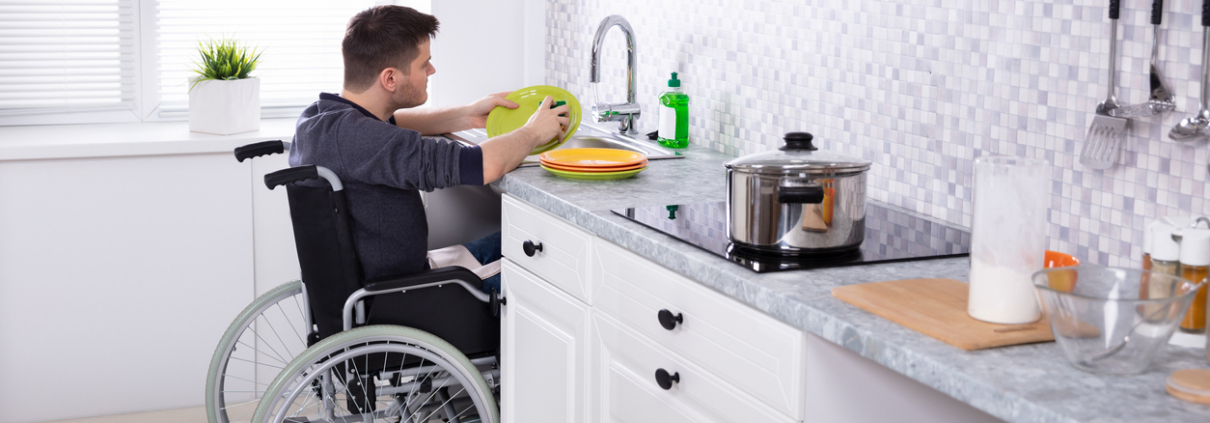Wheelchair Accessibility Modification for Homes

For those living with disabilities, the way you get around isn’t the only aspect of your lifestyle. There are also adjustments to your home life that need to be made in order to accommodate mobility equipment and medical supplies.
Since most traditional homebuilders may not be well versed in accessibility requirements or familiar with the range of home modification options available in the market, we created a rundown of some modification options you should consider for your home.
Bathroom Remodeling
Aside from the den and kitchen, the average person spends a good amount of time in the bathroom, so it makes sense to focus as much time on proper modification methods as possible.
For bathtubs, grab bars are absolutely essential for safe movement from the wheelchair to the tub or shower. If you find it difficult to lower yourself into a deep tub, you can opt for tub transfer seats, or replace your tub with a roll-in shower for easier access.
Toilets are also something to consider. The standard height of most toilets is 17 inches, but a slightly raised seat may make it easier for you to move to and from your wheelchair. Grab bars are also a safe investment, and can be installed right next to your toilet.
Sinks and faucets may have to be customized as well. Most sinks can have their vanity cabinets removed to allow for more clearance underneath, but make sure to protect yourself from sharp objects and piping by covering them with insulation or something similar. Faucets can be replaced with single-lever controls for better ease of use.
Wheelchair Accessible Ramps and Doors
Though the installation of accessible ramps and doors is essentially required for most commercial properties throughout the country, private residences are a little different. Depending on the total weight and size of your wheelchair, most builders tend to recommend wood, concrete, or aluminum ramps for your home. Each material has its pros and cons, so it helps to research before making a decision:
- Wood: Requires regular maintenance; can be finished with rough texture, or painted with rolled asphalt, to increase traction and grip.
- Concrete: Lasts many years without maintenance. Pricier than wood, cheaper than aluminum; and can be finished with rough texture to increase traction and grip.
- Aluminum: Preferred material for most builders. More expensive than wood or concrete; can be built for modularity.
Regardless of which material you go with, knowing the facts will help you make the best decision for you and your home.
When it comes to accessible doors and doorways, a minimum of 32 inches of clearance is recommended. Since you’re likely to have to turn to get through a doorway, you’ll need at least 36 inches of clearance to accommodate.
Swinging doors can become a hassle to open, so consider alternatives like automatic sliding doors or accordion doors. If you’re not particular about privacy, you can remove interior doors.
Accessible Kitchens
At minimum, any accessible kitchen remodeling should accommodate for floor space clearance of about five feet. This allows room for wheelchair access in the event you need to turn around. Traditionally, most countertops stand at about 36 inches from the floor, which can be difficult for those in wheelchairs to reach over. Lowering counters to about 30 inches, while allowing for ample knee clearance, can help alleviate the issue.
Sinks and cooking workspaces, like ovens or flattop grills, should also be lowered to make switches and knobs easier to access.
Keep in mind that home modifications aren’t offered by every homebuilder, so it pays to do your research or check with your local home builders association to determine which companies are the best suited to meet your specific accessibility needs.
The National Mobility Equipment Dealers Association (NMEDA) is an advocate for mobility and accessibility for drivers with disabilities. If you need help with converting or buying a handicap accessible car, truck or van, please consider one of our Quality Assurance Program mobility equipment dealers.
